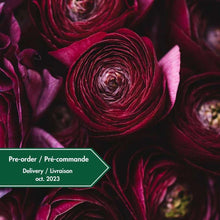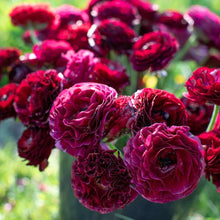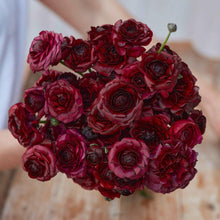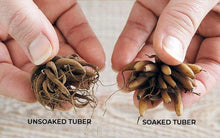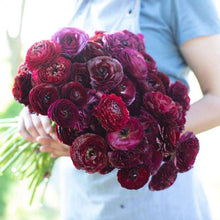
This order includes dried ranunculus corms. A corm is similar to a bulb in that it stores all the nutrients and energy that the plant needs to grow.
Ranunculus flowers look almost too perfect to be real! The blossoms display layer upon layer of silky petals in bright colors. These exquisite, rose-like flowers of ranunculus are a staple in any flower shop or wedding bouquet. In regions with mild winters, buttercups can be planted in autumn for an early bloom in April. In colder regions, they can be planted in spring to ensure an early summer bloom.
Full, extremely large flower heads sit atop long, strong stems, making this an excellent cut flower. Blooming 1 to 2 weeks after most varieties, these tall, vigorous plants are more heat-tolerant than other ranunculi, extending the bloom window.
🇫🇷 The Amandine line is of French origin; characterized by big flowers and strong stems, high productivity even in winter. Excellent for cut flowers. Extremely versatile and a must-grow for wedding and event work.
Ranunculus Amandine "Noir" in French, or "Black" in English, has extremely dark burgundy-purple flowers. Although not truly black (a color more or less impossible to find in nature) this rare variety is absolutely eye-catching. Elegant and mysterious, its blooms are slightly frilled, giving a ruffled appearance.
- Plant height: 45 - 60 cm
- Bulb size: 3/5
- Flowering period: May to July
- Hardiness: not very hardy, keep the tubers in a cool and dry place over winter
- Exposure: part sun, half-shade
- Soil: light, rich, well-drained
- pH: neutral
- Use: bedding, porches and patios, window boxes, lawn borders, cut flowers
🔗 See all ranunculus here: https://terracegardenfrance.com/collections/ranunculus





